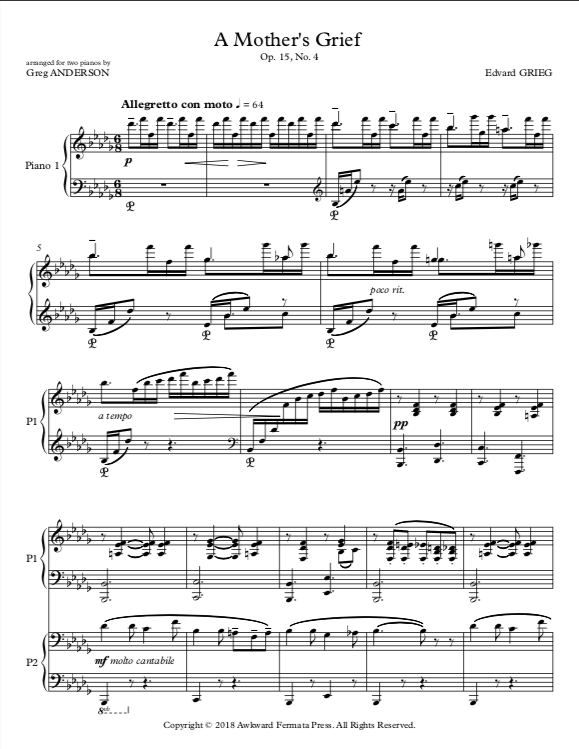 Image 1 of 2
Image 1 of 2

 Image 2 of 2
Image 2 of 2



Beethoven: Symphony No. 6
Allegretto
'Shepard's song. Happy and thankful feelings after the storm.'
from Symphony No. 6 in F major, Op. 68
by Ludwig Van Beethoven
arranged for two pianos by Anderson & Roe
intermediate-advanced
Allegretto
'Shepard's song. Happy and thankful feelings after the storm.'
from Symphony No. 6 in F major, Op. 68
by Ludwig Van Beethoven
arranged for two pianos by Anderson & Roe
intermediate-advanced
Allegretto
'Shepard's song. Happy and thankful feelings after the storm.'
from Symphony No. 6 in F major, Op. 68
by Ludwig Van Beethoven
arranged for two pianos by Anderson & Roe
intermediate-advanced
BEETHOVEN SYMPHONY #6
V: Allegretto from Symphony No. 6 in F major, ("Pastoral") Op. 68
by Ludwig van Beethoven arranged for two pianos by Anderson & Roe
The Sixth Symphony is outstanding in Beethoven’s symphonic output for its obvious programmatic, extramusical intent; he entitled the work “Pastoral Symphony, or Recollections of Country Life,” reflecting his strong affinity for nature (a veritable trait of the Romantic hero, to boot). He was known to take strolls in the Viennese countryside for leisure and inspiration, but the piece transcends the literal; in the program notes for the work’s premiere, Beethoven wrote that the Symphony embodies “more an expression of feeling than painting.” He granted the following descriptive titles for each of the five movements:
I. Awakening of cheerful feelings upon arriving in the country
II. Scene by the brook
III. Merry gathering of peasants
IV. Tempest
V. Shepherd’s song—cheerful and thankful feelings after the storm
The final movement, which we have arranged for two pianos, is a joyous, spacious rondo of elemental grandeur that encapsulates the tranquility of nature after the turbulence of the storm; it is a hymn of gratitude that is quietly cosmic in its expanse. We chose to take a straightforward approach in our transcription, as an homage to the original’s expressive and formal integrity.
— Greg Anderson & Elizabeth Joy Roe











